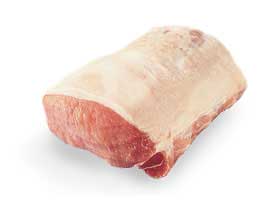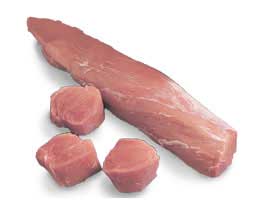Do you sometimes yell at your television?
I yell at my TV every time I watch a cooking show where someone uses the terms “pork loin” and “pork tenderloin” interchangeably. They are not the same cut of meat!
I guess I shouldn’t be too surprised, because both cuts come from the whole pork loin, but they are two distinctly different pieces of meat. And the confusion between the two cuts runs deep with tradition. Throughout the Midwest, they make something called a pork tenderloin sandwich which is really a slice of pork loin that’s pounded thin, breaded, fried until golden brown and delicious, and served on a bun. It looks amazing, but it’s pork loin, folks, not tenderloin!
Pork loin is located next to the pig’s spine, with the meat sitting right on top of the baby back ribs. If a pig asked you to scratch his back, you’d be scratching pork loin. Pork loin is sold bone-in or boneless, usually with a fat cap. You can cook it whole as a roast, or you can cut it into chops.
Pork tenderloin is a thin cylindrical muscle that’s attached to the inside of the ribcage. You couldn’t scratch a pig’s back and touch tenderloin. Pork tenderloin is sold boneless and is very lean, with no fat cap. In fact, pork tenderloin is just as lean as skinless chicken breast…very heart healthy! You can cook it whole or slice it into medallions for pan searing.
What pork loin and pork tenderloin both have in common is a mild taste. Both need something to amp-up the flavor. Think dry rubs, marinades, brining, salting, or serving with flavorful sauces over the meat or on the side.
| Pork Loin | Pork Tenderloin |
|---|---|
 |
 |
So now you know the difference between pork loin and pork tenderloin. We now return you to our regularly scheduled program already in progress. And feel free to yell at your television as much as you like.
Photos: National Pork Board
